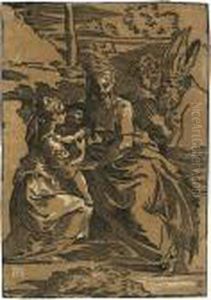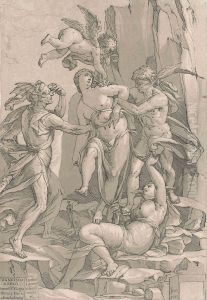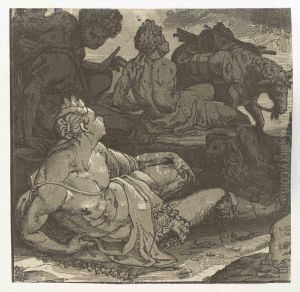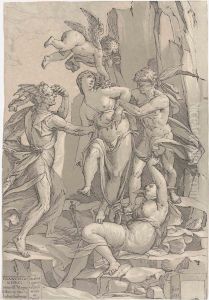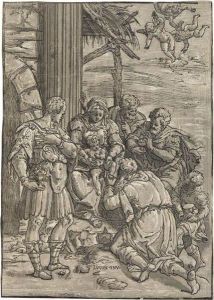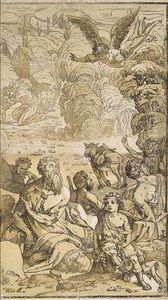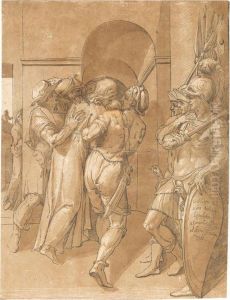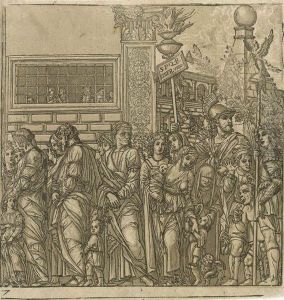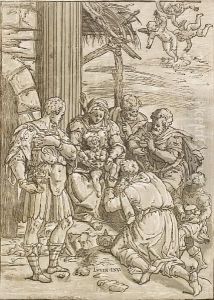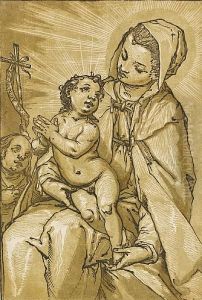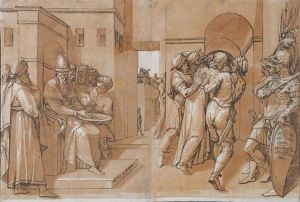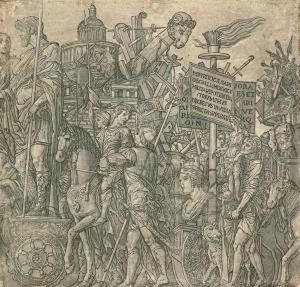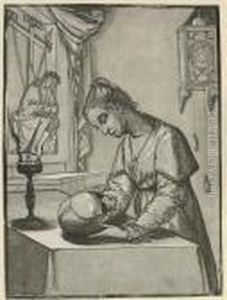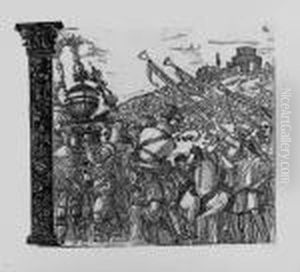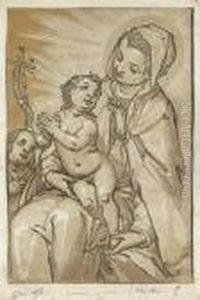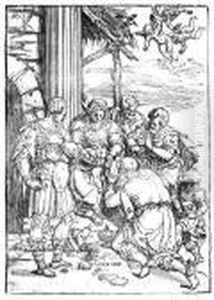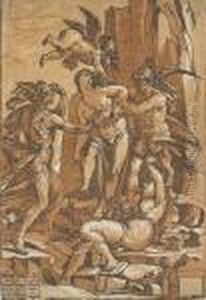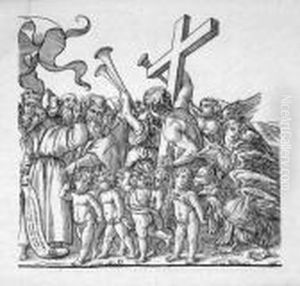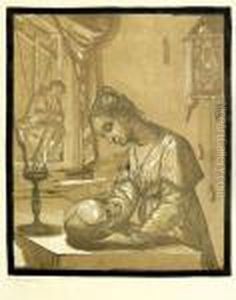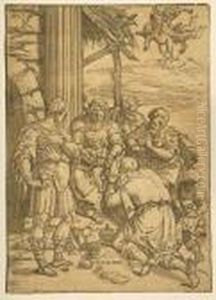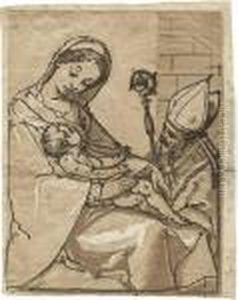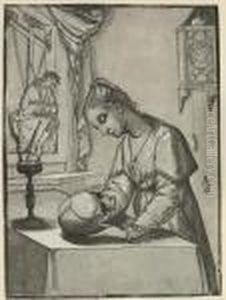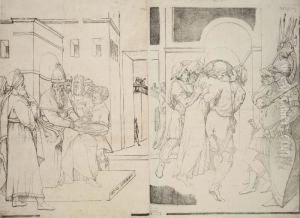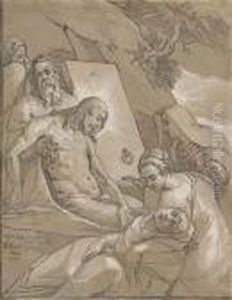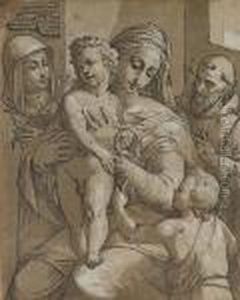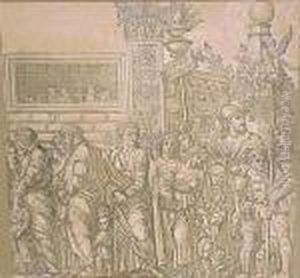Andrea Andreani Paintings
Andrea Andreani was an Italian engraver, born around 1540 in Mantua, Lombardy. He is best known for his mastery of the chiaroscuro woodcut, a form of printmaking that uses multiple blocks to create different tones and shades, simulating a more pictorial effect. Andreani moved to Rome early in his career, where he was influenced by the works of the Renaissance masters.
His career spanned the late Renaissance and early Baroque periods, and he was instrumental in popularizing chiaroscuro woodcuts in Italy. Andreani's prints were often based on the designs of other artists, such as Giambologna and Mantegna, and he was known for his ability to translate these designs into the woodcut medium with great skill and subtlety.
In 1584, Andreani returned to Mantua, where he produced one of his most famous works, a set of chiaroscuro woodcuts after Mantegna's 'Triumph of Caesar,' which was widely celebrated for its intricacy and fidelity to the original drawings. His interpretation of these works helped to preserve Mantegna's designs and disseminate them throughout Europe.
Andreani's work was characterized by his fine attention to detail and his ability to create depth and dimension through the use of multiple woodblocks. He was adept at using the chiaroscuro technique to produce images with a rich tonal range, from deep blacks to delicate grays and whites.
Unfortunately, despite his contributions to the art of engraving, Andreani's work was sometimes criticized during his time for lacking originality, as he often relied on the creations of others. Nevertheless, his technical skill was highly regarded, and his prints were collected by art connoisseurs across Europe.
Andreani continued to work in Mantua until his death in 1623. His legacy lives on through his prints, which remain important examples of the chiaroscuro woodcut technique and serve as a valuable record of Renaissance art. His prints are held in numerous museum collections and continue to be studied for their technical excellence and historical significance.
